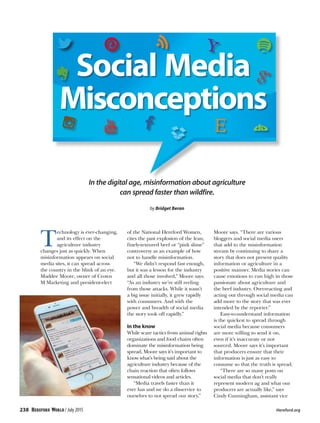The document discusses the issue of misinformation about agriculture spreading rapidly on social media and how producers can combat it. It notes that the "pink slime" controversy grew quickly through social media and still negatively impacts the industry. Producers are urged to proactively share their stories on social media to provide accurate information to consumers and counter misinformation from groups that spread sensationalized or inaccurate claims. Tips are provided on having an authentic voice, knowing your audience, using photos, listening before responding, and focusing on facts over fads when advocating for agriculture on social media.

